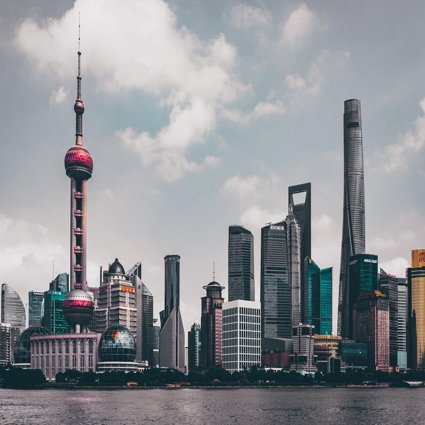
Made in China
In this lesson students explore how they are connected to China's rapid industrialisation
Key questions
What products does China make for export?
Why are so many foreign firms moving to China?
Who does China trade with?
What products does China make for export?
China's economy growth is based on the rapid development of its manufacturing industry, and high levels of foreign trade and investment. It is sometimes referred to as ‘the workshop of the world'.
About 80 percent of China's exports are manufactured goods - textiles and electronic equipment, and include toys, DVD players, mobile phones, shoes, clothes, food products, sea food, body jewellery, kitchen wares, etc. 50% of cameras, 30% of air conditioners and televisions, 25% of washing machines, and 20% of refrigerators in the world are now being produced or assembled in China. China also produces agricultural products and chemicals. China makes half of the world's cement and flat glass, and about a third of its aluminium. In 2006, China overtook Japan as the second-largest producer of cars and trucks after the United States. Out of the world's five busiest ports in the world, three are in China.
Why are so many foreign firms moving to China?
Foreign investments in China reached US$63 million in 2006. Foreign firms are attracted to moving to and investing in China because:
-
Since China joined the World Trade Organisation in 2001 barriers to foreign corporations have been removed
-
China has low production costs and a cheap yuan
-
With its population of 1.3 billion China provides a plentiful supply of cheap labour
-
China has a large and growing internal consumer market with rising purchasing power
-
Foreign-invested enterprises today produce about half of China's exports (note that the majority of China's foreign investment come from Hong Kong, Macau and Taiwan)
Who does China trade with?
China's primary trading partners include Japan, the U.S. (China's biggest), South Korea, Germany, Singapore, Malaysia, Russia and the Netherlands. China imports goods such as industrial supplies and high-technology equipment mainly from Japan and the United States. Regionally, almost half of China's imports come from East and Southeast Asia, and about one-fourth of China's exports go to the same destinations
Links
China crackdown on biggest fakes market - Telegraph
Starter
How many things can you find on you or around you that are ‘Made in China'? What are kinds of things are they?
Read the set of quotes from newspaper articles about Chinese exports.
What conclusions can you draw about the types and range of products made in China?
Main Activity
Task: Read the BBC online news clip and use the example of Lenovo to explain why the Chinese want people to recognise their brands and how they are trying to achieve this aim.
In your groups, produce a short two minute report back to the rest of the class.
The three issues dealt with are:
-
The image of products ‘Made In China' particularly relating to safety
-
The question of innovation (R&D) versus simply making copies of goods
-
The problem of ‘brand identification' in western countries
Using data about the current trading partners produce a map show who are China's main trading partners. Once completed, describe any patterns, and if possible explain the patterns.
Plenary
What resources are needed and where do they come from to make these products?
Can nearly one and a half billion people actually be supported, as they start to become greater consumers of energy themselves and to make all this stuff?
Citizens of industrialised nations have a much bigger ecological footprint: they require a much greater area of land and water to support them than people living in subsistence rural economies. Will China eventually be able to support its vast population at a level of comfort equivalent to Europe and North America?
Will imports of food and other resources become more necessary as time passes? Who will provide these imports?
File nameFiles
File type
Size
Download